The College of Natural Sciences welcomes ten new faculty members this fall. Whether studying dwarf spheroidal galaxies, unraveling how a healthy brain processes visual input from the natural environment, or studying the physics of everyday materials, these innovative faculty members build on the college’s reputation for cutting-edge research and research-based teaching.
 Taft Armandroff
Taft Armandroff
Director, McDonald Observatory and Professor, Department of Astronomy
Armandroff’s scientific interests include stellar populations in our galaxy and nearby galaxies, dwarf spheroidal galaxies, and globular clusters. Prior to arriving at The University of Texas at Austin in June 2014, Armandroff served for eight years as Director of the W. M. Keck Observatory in Hawaii. Before that, Taft spent nineteen years at the National Optical Astronomy Observatory (NOAO) in Tucson, Arizona, starting as a postdoctoral research fellow and culminating as a tenured astronomer and NOAO Associate Director. A 1982 graduate of Wesleyan University, Armandroff holds a bachelor's degree in astronomy with high honors. He continued his studies at Yale University, earning a master's degree, an M.Phil., and a Ph.D. in astronomy.
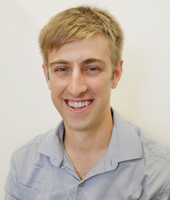 Jeffrey Danciger
Jeffrey Danciger
Assistant Professor, Department of Mathematics
Danciger received his bachelor's degree in mathematics and physics from the College of Creative Studies at the University of California, Santa Barbara. Afterwardsd, he received his Ph.D. in mathematics from Stanford University in 2011 under Steven Kerckhoff. He was then awarded a Mathematical Sciences Postdoctoral Research Fellowship by the National Science Foundation, and conducted postdoctoral research here at The University of Texas at Austin from 2011 to 2014. His research interests lie in low-dimensional geometry and topology including hyperbolic manifolds and other non-Euclidean geometric structures.
 Brad Erisman
Brad Erisman
Assistant Professor, Department of Marine Science
Erisman utilizes a blend of field, laboratory and analytical techniques to understand the influence of variations in behavioral, demographic and life history traits in fishes on their response to fishing pressure and environmental change. He applies a multidisciplinary approach to evaluate spatial and temporal interactions between fishes, fisheries, coastal habitats, managed areas, and endangered species. His research seeks to inform management policies that promote a balance between healthy marine ecosystems and productive fisheries for the benefit of coastal communities. Erisman received his bachelor’s degree in aquatic biology from the University of California, Santa Barbara, his master's degree in marine biology from California State University, Northridge and his Ph.D. in marine biology from Scripps Institution of Oceanography in San Diego. After completing his doctorate in 2008, he remained at Scripps as a postdoctoral researcher and later as an assistant research scientist.
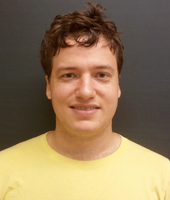 Arie Israel
Arie Israel
Assistant Professor, Department of Mathematics
Israel received his master's degree from Florida Atlantic University and his Ph.D. from Princeton University. His research interests are in harmonic analysis and problems related to the smooth extension of functions. Israel was a National Science Foundation (NSF) postdoctoral fellow at New York University's Courant Institute of Mathematical Sciences before joining us in the Department of Mathematics at The University of Texas at Austin.
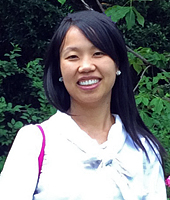 Lizhen Lin
Lizhen Lin
Assistant Professor, Department of Statistics and Data Sciences
Lin received her doctorate in mathematics in 2012 from the University of Arizona under the guidance of Rabi Bhattacharya. Prior to that, she spent her undergraduate years studying mathematics and statistics at Sichuan University from 2002-2006. After receiving her doctorate, Lin spent two years as a postdoctoral fellow from 2012 to 2014 at Duke University working with David Dunson. She was also a member of the Laboratory for Psychiatric Neuroengineering in Duke University Medical Center beginning in early 2013, where she worked on neuropsychiatric research. Her areas of research include Bayesian nonparametric theory and asymptotics, statistical inference on manifolds and general spaces, shape constrained inference, big data analysis, large sample theory for networks and machine learning in neuroscience.
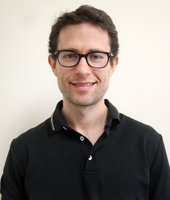 Ian Nauhaus
Ian Nauhaus
Assistant Professor, Department of Neuroscience
Nauhaus research looks at coding strategies and corresponding mechanisms of the brain’s visual system. Since humans rely heavily on vision to guide behavior and perceive the world, he hopes that by probing the circuits of the visual system with light from a computer monitor, he can uncover general principles of how a healthy brain processes input from the natural environment. Many recently developed experimental tools for measuring activity of neural circuits should allow for new leaps in understanding the human brain. Nauhaus and his lab employ multiple imaging and electrophysiological methods to measure neural activity at different spatial and temporal scales. Viral vectors are also used to measure this activity with greater specificity within the circuit. These experimental tools are combined to investigate how populations of cells in the visual system encode visual input. More specifically, his lab focuses on how feedforward circuits rapidly build efficient representations of a visual scene at successive stages of the visual hierarchy, and how feedback mechanisms steer these representations under different contexts. Nauhaus will also have a joint appointment in the College of Liberal Arts' Department of Psychology.
 Eric Price
Eric Price
Assistant Professor, Department of Computer Science
Price studies computational and information theoretic aspects of sparse recovery and compressive sensing, with a particular focus on Fourier transforms. He completed both his undergraduate and graduate studies at the Massachusetts Institute of Technology, ultimately receiving a Ph.D. in computer science in 2013. He then began a year of postdoctoral research at the Simons Institute for the Theory of Computing at the University of California, Berkeley and the IBM Almaden Research Center in San Jose, California before joining the faculty of The University of Texas at Austin.
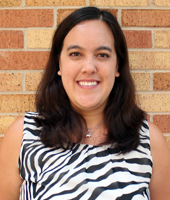 Emily Que
Emily Que
Assistant Professor, Department of Chemistry
Que grew up in Minnesota and obtained a bachelor's degree in Chemistry from the University of Minnesota in 2004. She then received her Ph.D. in chemistry at the University of California, Berkeley in 2009 in the laboratory of Christopher Chang, where she developed Gd-based contrast agent sensors for copper. During her postdoctoral research at Northwestern University in the laboratories of Thomas O'Halloran and Teresa Woodruff, she worked at the interface of chemistry and reproductive biology, studying the roles of zinc in mammalian fertilization. Que's research will focus on developing chemical tools for probing the cellular functions of metals and for medical diagnostics.
 Purnamrita Sarkar
Purnamrita Sarkar
Assistant Professor, Department of Statistics and Data Sciences
Sarkar works on large-scale statistical machine learning problems with a focus on statistical models, asymptotic theory and scalable inference algorithms for large networks. She obtained her doctorate from the School of Computer Science at Carnegie Mellon University in 2010. She then spent time as a postdoctoral scholar at the University of California, Berkeley jointly in the Department of Electrical Engineering and Computer Sciences and the Department of Statistics. She received her bachelor's degree in computer science from the Indian Institute of Technology Kharagpur in 2004.
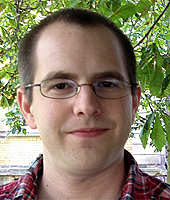 Etienne Vouga
Etienne Vouga
Assistant Professor, Department of Computer Science
Vouga received his Ph.D. in computer science from Columbia University while studying under Eitan Grinspun and received his undergraduate degrees in mathematics and computer science from Rice University. He spent the past year as a National Science Foundation (NSF) Mathematical Sciences Postdoctoral Fellow at Harvard University before joining the team at The University of Texas at Austin. Vouga's research focus will be on studying the geometry of the physics of everyday materials like hair, cloth, masonry, fluids and tissue. By blending computer science, applied physics, geometry and numerical methods, he uses these geometric insights to develop more accurate and efficient computational tools for predicting and designing the motion of these materials, with applications in computer graphics, engineering, computational mechanics and medicine.

















Comments